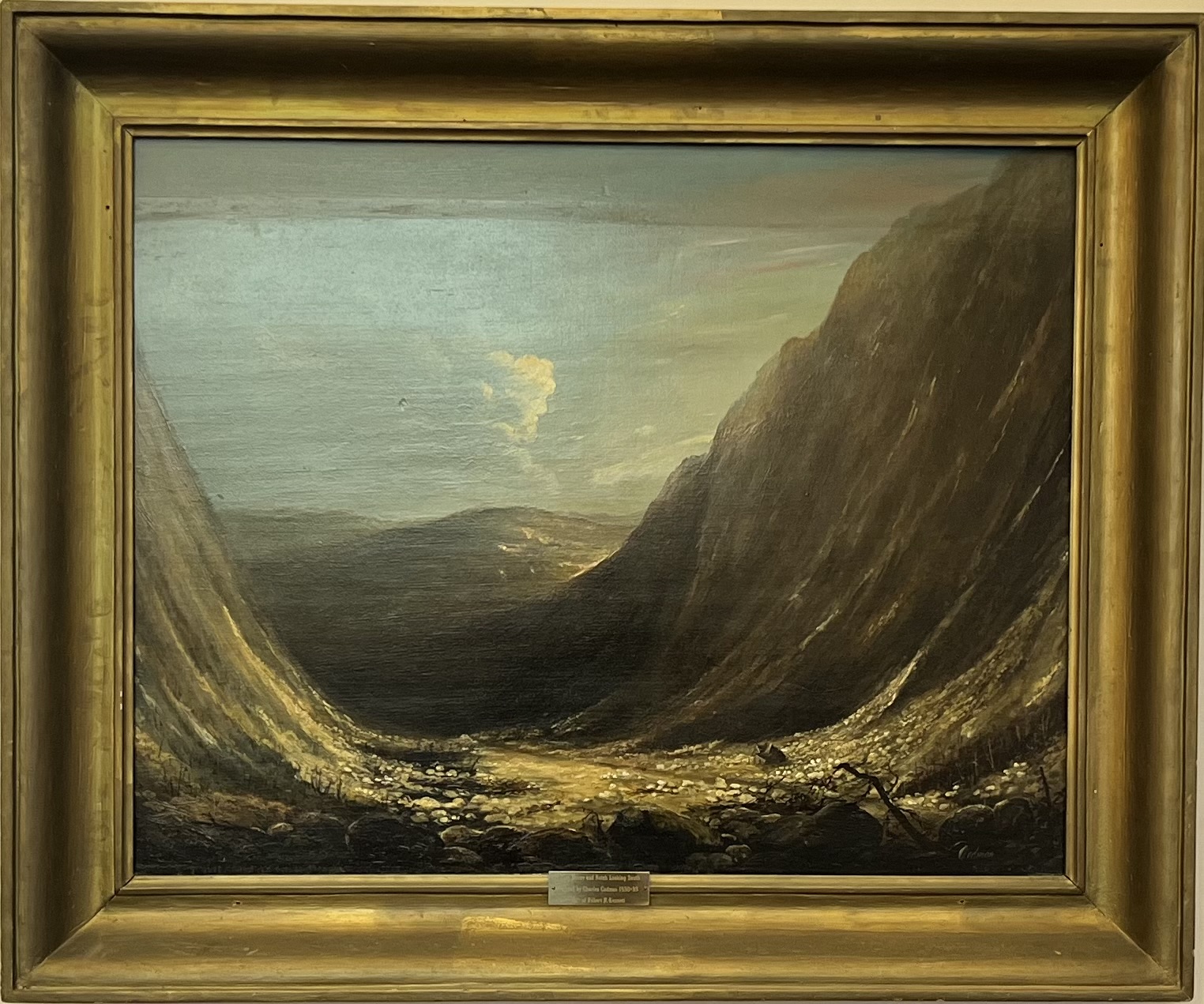
"Willey House & Notch Looking South" by Charles Codman
The story of Charles Codman (1800?-1842) is necessarily brief, but one of meteoric success as Maine's greatest landscape painter of the l9th century. It is not known for certain where or when Codman was born, although some authorities believe he was born in Portland, perhaps a descendant of Deacon Richard Codman. Others cite Boston or its immediate environs as his likely birthplace. At any rate, it is known that Codman was trained as a painter of clock faces by Simon Willard of Roxbury and worked for a time with Boston artist John R. Penniman, a wellknown painter of signs, fire buckets, and military standards. When Codman came to Portland in 1822, he established a small business similar to that of Penniman and soon had a fair reputation as a decorative artist.
Codman maintained his decorative emphasis until 1826 when he was commissioned to execute a large mural for the Elm Tavern at Temple and Federal Streets, an oil work in black and white after the fashion of French scenic wallpaper.
Local critic John Neal, returning from Europe in 1827, was so impressed by the work that he visited Codman at his studio commissioned him to create a similar work, and spoke so favorably of the young artist that many of the community's foremost citizens soon did likewise. Codman's first public exhibition took place in 1828 at the Boston Athenaeum, where he was to exhibit his works on three subsequent occasions, and in 1832 he exhibited at the National Academy in New York.
Codman's favorite subjects were the immediate environs of Portland, particularly the islands of Casco Bay. His "View of Diamond Cove," completed in 1829, is perhaps his most famous work and has been reproduced many times. In the mid 1830's Gov. Robert P. Dunlap commissioned him to execute a painting of the capitol in Augusta, but the islands, mountains, and forests of Maine continued to be his most beloved subjects until his death from tuberculosis in 1842. The marker above Codman's grave in Eastern Cemetery speaks eloquently of his achievements: "a Child of genius whose Pencil has earned for him a cherished and enduring Reputation."
Note: The original source of this text can be found here.
